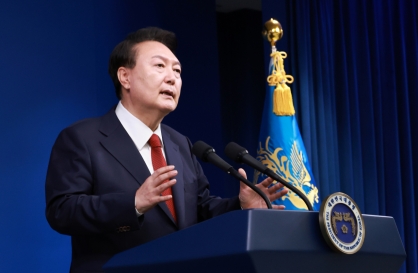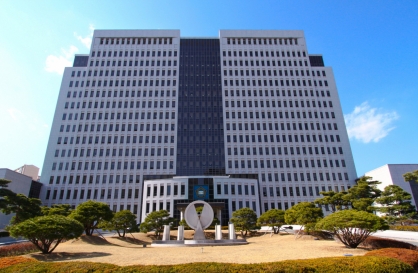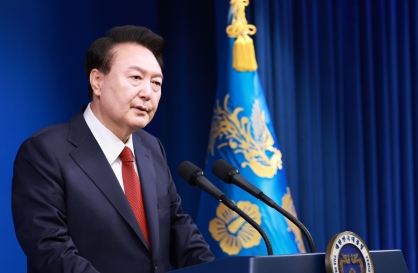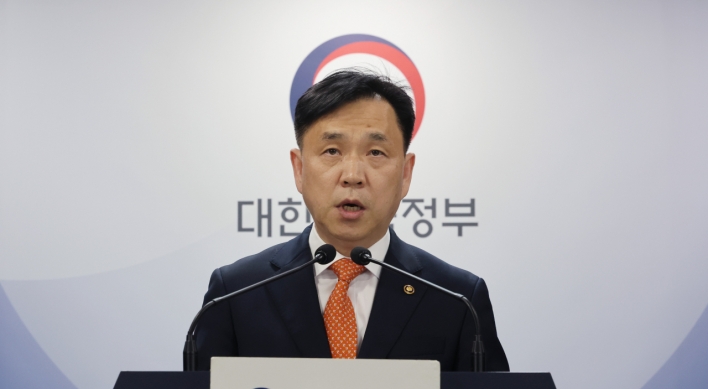World offers tips on Korea’s safety agency after ferry disaster
By Shin Hyon-heePublished : June 1, 2014 - 20:46
This is the sixth in a series of articles that examine Korea’s preparedness for disasters and social risks in light of the recent Sewol tragedy. ― Ed.
As South Korea moves to launch a new national safety agency in the wake of the ferry tragedy, major disasters around the world and ensuing countermeasures may offer lessons and useful tips.
The envisioned ministry will take over disaster response functions from various institutions including the Ministry of Security and Public Administration, the National Emergency Management Agency, the Ministry of Oceans and Fisheries, and the Coast Guard.
It is hoped that an integrated, streamlined national scheme can be set up that facilitates a quicker initial response to emergencies and fosters pan-government coordination modeled on the U.S. Federal Emergency Management Agency.
Skeptics, however, believe that that the organization may mark another failed structural revamp, just like previous attempts made in the aftermath of major calamities.
NEMA itself was set up in 2004 as the Korean equivalent to FEMA following the Daegu subway fire that killed nearly 200 people and injured another 150.
Launched in 1979, FEMA serves as a control tower to coordinate the U.S. federal government’s role with other local agencies and relief groups in times of a disaster.
In 1983, FEMA introduced its Integrated Emergency Management System, a 13-step process with two parallel paths, each focused on current capability and possible improvements. This approach encompassed “direction, control and warning systems which are common to the full range of emergencies, from small isolated events to the ultimate emergency ― war.”
The U.S.’ disaster response system was reinforced after the Sept. 11, 2001, terrorist attacks with the creation of the Department of Homeland Security, into which FEMA was incorporated in 2003.
But FEMA also came under fire over its tardy response and sloppy interagency coordination after Hurricane Katrina struck the southern U.S. in 2005.
The catastrophe led to the 2008 formulation of the National Response Framework, a comprehensive, national, all-hazards approach to domestic incident response. It identifies the key response principles, roles and structures that organize a national response, as well as how communities, states, the federal government and private-sector and nongovernmental partners should apply the principles for a unified, effective response.
The Sewol disaster, for its part, exposed NEMA’s inherent flaws ― mismanagement, misallocation of resources, and a lack of expertise and flexibility.
Some experts argue that local authorities should be empowered to carry out a speedier, more effective mission on the ground, while others see a centralized scheme as more realistic given the size of the country’s territory and well-knit transport and communication infrastructure.
Shortly after the World Trade Center attack, the chief of the New York Fire Department took command at the scene, with the federal government taking a supporting role.
Calls are growing for long-term, fundamental systematic changes to prevent another national disgrace, along with the need for greater public awareness and a bigger pool of disaster specialists.
Despite having no specialized safety agency, Japan’s disaster prevention system has also gone through a myriad of structural and functional changes.
The island nation has for decades been formulating comprehensive yet detailed manuals while providing practical public education, given its vulnerability to earthquakes and tsunamis.
Chaired by the prime minister, the Central Disaster Prevention Council orchestrates related policies as the top decision-making body, comprised of the entire Cabinet, heads of relevant public institutions and experts.
The council has improved the disaster prevention body and related rules after every major disaster, though it took much flak in the wake of the 2011 Fukushima earthquake for its inadequate response.
By Shin Hyon-hee (heeshin@heraldcorp.com)
As South Korea moves to launch a new national safety agency in the wake of the ferry tragedy, major disasters around the world and ensuing countermeasures may offer lessons and useful tips.
The envisioned ministry will take over disaster response functions from various institutions including the Ministry of Security and Public Administration, the National Emergency Management Agency, the Ministry of Oceans and Fisheries, and the Coast Guard.
It is hoped that an integrated, streamlined national scheme can be set up that facilitates a quicker initial response to emergencies and fosters pan-government coordination modeled on the U.S. Federal Emergency Management Agency.
Skeptics, however, believe that that the organization may mark another failed structural revamp, just like previous attempts made in the aftermath of major calamities.
NEMA itself was set up in 2004 as the Korean equivalent to FEMA following the Daegu subway fire that killed nearly 200 people and injured another 150.
Launched in 1979, FEMA serves as a control tower to coordinate the U.S. federal government’s role with other local agencies and relief groups in times of a disaster.
In 1983, FEMA introduced its Integrated Emergency Management System, a 13-step process with two parallel paths, each focused on current capability and possible improvements. This approach encompassed “direction, control and warning systems which are common to the full range of emergencies, from small isolated events to the ultimate emergency ― war.”
The U.S.’ disaster response system was reinforced after the Sept. 11, 2001, terrorist attacks with the creation of the Department of Homeland Security, into which FEMA was incorporated in 2003.
But FEMA also came under fire over its tardy response and sloppy interagency coordination after Hurricane Katrina struck the southern U.S. in 2005.
The catastrophe led to the 2008 formulation of the National Response Framework, a comprehensive, national, all-hazards approach to domestic incident response. It identifies the key response principles, roles and structures that organize a national response, as well as how communities, states, the federal government and private-sector and nongovernmental partners should apply the principles for a unified, effective response.
The Sewol disaster, for its part, exposed NEMA’s inherent flaws ― mismanagement, misallocation of resources, and a lack of expertise and flexibility.
Some experts argue that local authorities should be empowered to carry out a speedier, more effective mission on the ground, while others see a centralized scheme as more realistic given the size of the country’s territory and well-knit transport and communication infrastructure.
Shortly after the World Trade Center attack, the chief of the New York Fire Department took command at the scene, with the federal government taking a supporting role.
Calls are growing for long-term, fundamental systematic changes to prevent another national disgrace, along with the need for greater public awareness and a bigger pool of disaster specialists.
Despite having no specialized safety agency, Japan’s disaster prevention system has also gone through a myriad of structural and functional changes.
The island nation has for decades been formulating comprehensive yet detailed manuals while providing practical public education, given its vulnerability to earthquakes and tsunamis.
Chaired by the prime minister, the Central Disaster Prevention Council orchestrates related policies as the top decision-making body, comprised of the entire Cabinet, heads of relevant public institutions and experts.
The council has improved the disaster prevention body and related rules after every major disaster, though it took much flak in the wake of the 2011 Fukushima earthquake for its inadequate response.
By Shin Hyon-hee (heeshin@heraldcorp.com)





![[K-pop’s dilemma] Can K-pop break free from ‘fandom’ model?](http://res.heraldm.com/phpwas/restmb_idxmake.php?idx=644&simg=/content/image/2024/05/09/20240509050541_0.jpg&u=20240509173751)




![[News Analysis] Yoon's first 2 years marked by intense confrontations, lack of leadership](http://res.heraldm.com/phpwas/restmb_idxmake.php?idx=644&simg=/content/image/2024/05/09/20240509050612_0.jpg&u=20240509233252)







![[Today’s K-pop] NCT’s Mark to drop 1st solo album in February 2025](http://res.heraldm.com/phpwas/restmb_idxmake.php?idx=642&simg=/content/image/2024/05/10/20240510050597_0.jpg&u=)